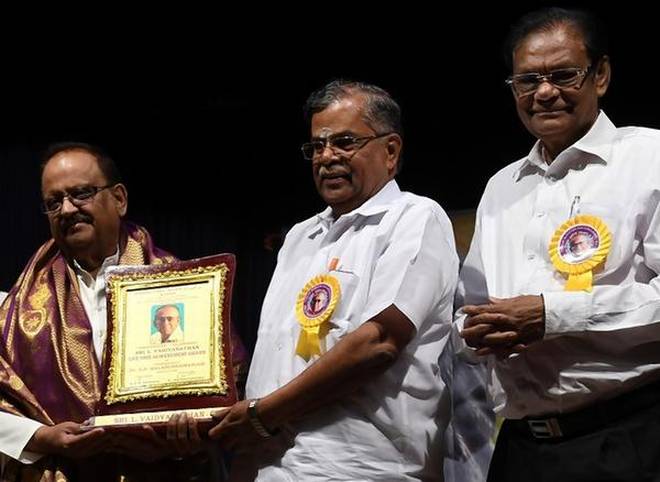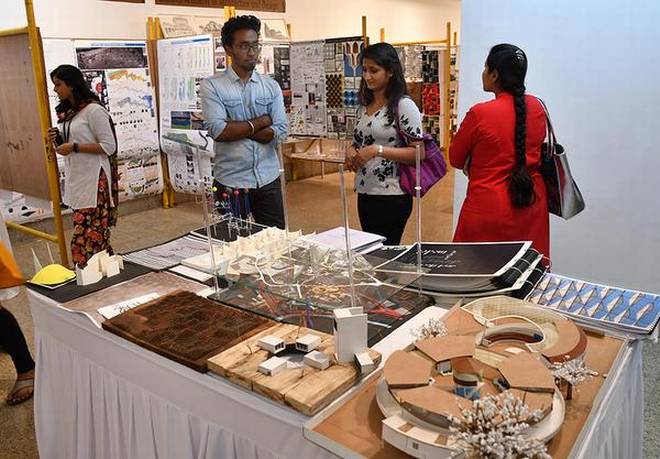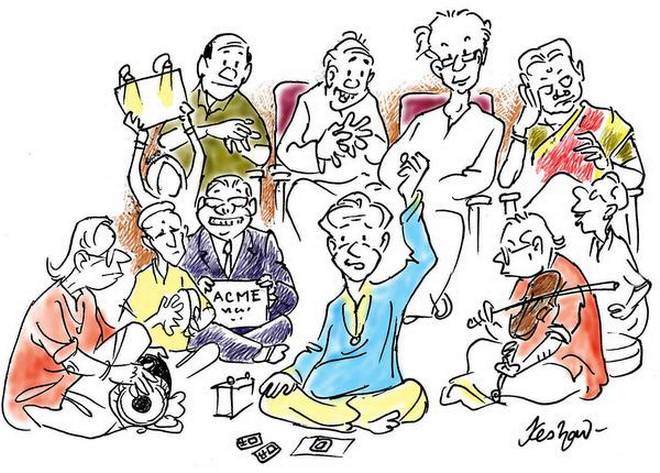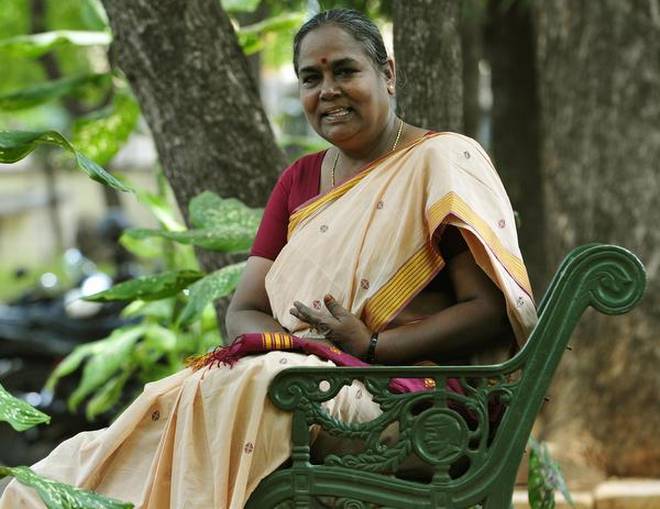Journalist Gnani passes away

The literary critic is survived by his wife and son
Journalist, playwright and literary critic Gnani died in Chennai in the early hours of Monday.
He was 64. He is survived by his wife Padmavathi, who is also a writer and son, Manush Nandan, cinematographer.
Gnani, whose original name was V. Sankaran, began his career at the Indian Express. Later, he edited a number of journals in Tamil. He ran a theatre group, Pareeksha. His column O Pakkangal in popular Tamil weeklies was a big hit.
He contested the Alandur by-poll unsuccessfully in April 2014 on the Aam Aadmi Party (AAP) ticket.
According to Jananee, journalist and who is close to Gnani’s family, it has been decided to donate the body to Rajiv Gandhi Government General Hospital-Medical College.
source: http://www.thehindu.com / The Hindu / Home> News> States> Tamil Nadu / by T Ramakrishnan / Chennai – January 15th, 2018
New amphitheatre facility at Rail Museum
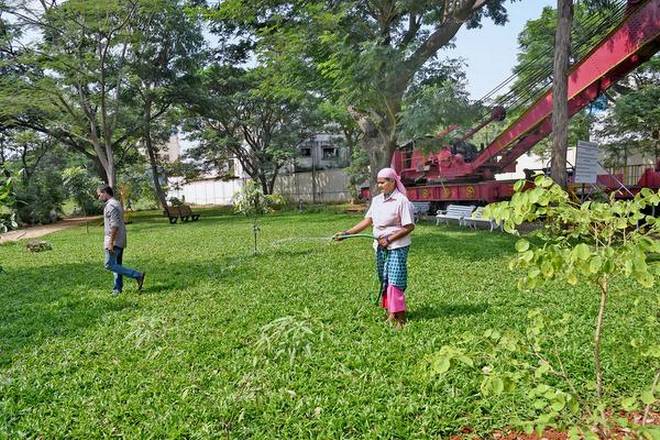
If you are looking for a space to organise a long-overdue get-together during the Pongal holidays, here is an option for you.
Recently, a 14/10mt amphitheatre with a seating capacity of 150 to 200 persons, was inaugurated at the Regional Rail Museum, Chennai.
This is one of four facilities on the premises of the Museum that are open to the public to conduct events for a few. The other three facilities — two lawns, each of which has the capacity to accommodate 75 to 100 persons, and a roofed enclosure.
It is four months since the Regional Rail Museum has opened up its premises for events by members of the public.
According to a Museum official, this initiative is aimed at increasing the footfall at the museum during weekdays.
“The response to the new measure has been good. Since, around 20 get-togethers have been held. Many of these get-togethers have had to do with families and friends. Recently, a school and a women’s association organised get-togethers. The Museum also allows corporates to organise their events at these facilities,” says the official. Outside caterers and use of audio systems are allowed. Consumption of alcohol and smoking on the premises are strictly prohibited.
Chairs and wheelchairs will be provided, if sought.
A few months ago, the museum increased the number of rest-rooms, which include specially-designed ones for senior citizens and the differently-abled.
The Museum’s closing time has been extended from 6 p.m to 10 p.m. on weekends. Regional Rail Museum, Chennai is located on the premises of Integral Coach Factory on New Avadi Road near Villivakkam. Those interested in booking any of the venues, may call V. Venkataraman, the Museum guide, on his mobile at 98418 68402.
Photos: V. Ganesan
source: http://www.thehindu.com / The Hindu / Home> News> Cities> Chennai / by L. Kanthimathi / January 12th, 2018
Award conferred on veteran singer
SPB praises violinist L. Vaidyanathan
Singer S.P. Balasubrahmanyam was conferred the Lifetime Achievement award by Nandi Fine Arts and KAPRI, in association with the Bharatiya Vidya Bhavan at an event titled ‘Violin maestro Kalaimamani L. Vaidyanathan – 75 – a celebration of his life and music’.
Addressing the audience, Mr. Balasubrahmanyam said that though he was not properly trained in Carnatic music, he had been singing for over 50 years and considered it to be a great blessing. “I am not a learned singer, but I learnt so much by travelling along with eminent people,” he said.
He said he had sung over 40,000 songs till date, but he was more concerned about the songs that pleased the audience than mere numbers.
The singer shared his memories of violin maestro L. Vaidyanathan and spoke in detail about his humility and spiritual inclination.
Earlier, speaking at the event, L. Ganesan, BJP leader and Rajya Sabha MP, said: “In most countries, music is just a form of entertainment, but in India, it is closely entwined with devotion too.”
Singer Vani Jayaram, musician V. Rajkumar Bharathi and other eminent personalities took part in the event.
s0urce: http://www.thehindu.com / The Hindu / Home> News> Cities> Chennai / by Staff Reporter / Chennai – January 13th, 2018
Website on Kangayam cattle
At Kuttapalayam, located about 100 km from Coimbatore, is a research foundation that focuses on in situ conservation and breeding of native breed of cattle (Kangayam cattle).
At an event held here on Sunday at K’ sirs, the Seenapathy Kangayam Cattle Research Foundation (SKCRF), which is involved in the work at Tirupur district for several decades now, launched an updated website of its activities (kangayambull.com), released brochures, and sought more support from the public to improve infrastructure and awareness on the Kangayam cattle. The website was hosted in 2009.
A release said that the school organises Pongal festival annually and this year was a platform to create better awareness on Kangayam cattle.
The foundation also has a resource and research centre for conservation of Kangayam cattle and Korangadu, a Silvi pasture grazing system in the western districts of the State.
“An awareness for the protection of indigenous breeds of cattle has been created because of the jallikattu protest last year by the people and students of Tamil Nadu. I would like to thank them all on behalf of the cattle grazers,” says Karthikeya Sivasenapathy, managing trustee of the foundation.
Protection of indigenous varieties of cattle is now becoming prevalent in India because of last year’s protest. The public have understood the need to conserve the native cattle breeds, said R. Radhakrishan, MP.
source: http://www.thehindu.com / The Hindu / Home> News> Cities> Coimbatore / b A. Kishore / Coimbatore – January 08th, 2018
100 years of the Tamil short story
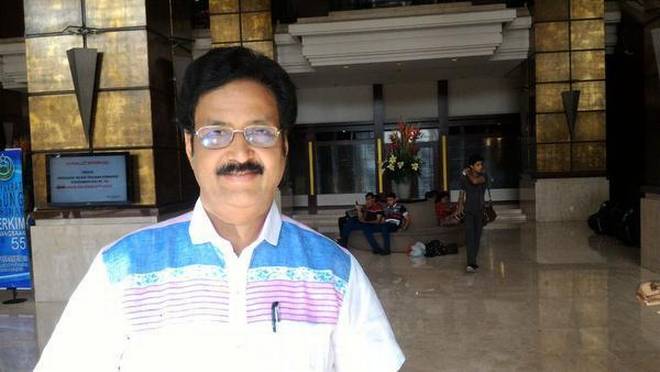
The Hindu Lit for Life is going to have an exclusive Tamil lit fest for the first time this year. It could not have come at a more appropriate time as 2018 marks the completion of the centenary of the Tamil short story. The event will honour senior writer Indira Parthasarathy with a lifetime achievement award and five short story writers with awards and cash prizes.
“Though we have been giving space to all languages in our annual literary festival, this year we have decided to have an exclusive event for Tamil because The Hindu (Tamil) completes five years and the paper is located in Chennai,” said Nirmala Lakshman, director and curator of The Hindu Lit for Life.
The prelude
The short story ‘Kulathankarai Arasmaram’, by freedom fighter V.V.S. Iyer, published in 1917, was a trendsetter in Tamil fiction. The narrator of this story — which captures the plight of a victim of child marriage, Rukmini — is, quite exceptionally, a Peepal tree. Rukmini’s husband, who had reluctantly considered marrying another girl under pressure from his parents, becomes a sannyasin when Rukmini dies. After ‘Kulathankarai Arasmaram’, there was no stopping the Tamil short story, which reached great heights in the hands of subsequent writers.
Lakshman said that in previous editions of the The Hindu Lit for Life, Tamil literature has jostled for space with literature in other languages, especially English. “This year’s event will showcase every facet of Tamil short stories,” she said.
To be inaugurated by noted theatre personality Na. Muthusamy on January 7 at Sir Mutha Venkatasubba Rao Concert Hall in the Lady Andal School premises in Chetpet, the one-day festival will be a prelude to the-three day Lit for Life celebrations. The Tamil festival will have discussions on regional literature, Dalit writings, politics of Tamil short stories, films based on them, impact of world literature on Tamil short stories, feminist writings and short stories in popular magazines.
Getting integrated
To add to the attraction, there will be screenings of films based on Tamil short stories directed by late Balumahendra. They were serialised for television as Kathaineram in the early 1990s.
Noted film director and National Film Award winner Vetrimaaran will initiate a debate on the subject.
Indira Parthasarathy will be given the lifetime achievement award. He will also honour the other awardees.
“Parthasarathy will be conferred the award in The Hindu Lit for Life to stress the importance of Tamil language,” said Lakshman. “We are giving the award during the main festival as it is the first time we are conferring the lifetime achievement award on a Tamil writer and we want to honour him within a wider literary context. The other awards are for specific categories. This is also a way of integrating the Tamil festival into the larger one,” said Lakshman.
Some of the speakers at the Tamil Lit Fest include Prapanchan, Imayam, Pattukkottai Prabakar, A Vennila, Chandra, Azhagiya Periyavan, Kalanthai Peermohamed and film directors Suseenthiran and Sasi.
source: http://ww.thehindu.com / The Hindu / Home> Lit for life> Tamil Lit Fest / by B. Kolappan / January 07th, 2018
Tracing their roots from Reunion Island

Out of the 8.5 lakh population in the island, 3 lakh people are Tamils
It was a trip Bernard Goulamoussen (50), a French citizen of Tamil origin settled in Reunion Island, had been longing for since his childhood.
Eagerness writ large on his face, Goulamoussen tells how he was able to see traces of his roots wherever he went during his current trip in Tamil Nadu.
For, he had no idea to which part his ancestors who had migrated more than 200 years ago belonged.
Goulamoussen was among a group of 10 such visitors to Tamil Nadu from Reunion Island, a French overseas territory in the Indian Ocean, who have come to the State to understand their forefathers’ culture, tradition, civilisation, ancient history, educational system, rituals and practices.
After visiting several parts of the State including Chennai, Madurai, Dindigul and Thanjavur, they landed in Tiruchi on Sunday to explore its cultural heritage.
Led by Yogacharya Nilamegame, a native of Puducherry who had settled in Reunion Island about 30 years ago, they visited Cauvery College of Engineering and Technology at Perur near here and interacted with the students to understand the Indian educational system.
Like Goulamoussen, most of the group members also have no knowledge of their mother tongue Tamil.
But, they still practice Tamil culture reflecting in the way they dress and religious practices.
“We do not know where our forefathers lived in Tamil Nadu. We feel ecstatic to be in the land of our origin. We may have forgotten Tamil. But we have not given up our tradition yet,” says Goulamoussen, a temple priest, in French.
Out of 8.5 lakh population of Reunion Island, 3 lakh people were Tamils. Except one-third among them, the rest had poor knowledge about their roots in Tamil Nadu.
“But then, it is because of our deep understanding of festivals of Tamils and religious practices that we regularly recite Devaram and Thiruvasagam in temples,” said Nilamegame, who has penned a book on rituals of Tamils in Tamil and French.
After the interaction, N. Nallusamy, former Minister and Chairman of Cauvery College of Engineering and Technology felt that the State government should set up an exclusive Department to teach Tamil language to the diaspora, particularly in Reunion Island, Cambodia, Vietnam, and Myanmar.
source: http://www.thehindu.com / The Hindu / Home> News> Cities> Tiruchirapalli / by C. Jaisankar / Tiruchi – January 08th, 2018
Workshop showcases variety in architectural themes
Exhibition, discussions held as part of Portfolio18
Deft handwork, good imagination and perfect pictorial finish were the highlights of Portfolio18, an architectural workshop organised at the Lalit Kala Akademi in the city. The exhibition of the works of students pursuing architecture was organised by the Chennai Architecture Foundation.
The three-day event, which was inaugurated on Friday, showcased the works of students from 11 architecture colleges from across the State. The displays, some of which were thesis works by students, included representations of the topography of villages, architectural works of real estate layouts in 2D formats and printed T-shirts. Hundreds of enthusiastic visitors took a keen interest in the displays.
A spokesperson of CAF said the exhibition, which was not a competition, would be an annual event. Apart from the exhibition, the event also had open house discussions where speakers talked about architecture and architectural education, the ground reality in academic institutions and the nature of work produced, and experiments undertaken in academic studios across the State.
In the open house session, students spoke on the theme ‘If I were to learn design, how would I learn?’.
Another segment was ‘College in Focus’, where representatives of institutions shared their ideas and approaches to education.
The event had a variety of events of value to students of architecture, as well as aspiring students and their parents.
source: http://www.thehindu.com / The Hindu / Home> News> Cities / by Staff Reporter / Chennai – January 09th, 2018
Tracing the genealogy and features of that unique species, the Mylapore Music Aficionado
A tongue-in-cheek, two-part piece that traces the genealogy and features of a unique species
Tamil Nadu erupted in the early 20th century into what can only be called a revolution, the Dravidian revolution, which transformed the texture of Tamil society. It was ‘Periyar’ E.V. Ramasami Naicker, who changed the classist nature of public life in Tamil land. Within a generation, Tamil Nadu was transformed; with people from various castes taking control of politics and society; the ‘Periyar’ effect.
In this avalanche of change, Brahmins who were at the top of the social food chain became the singular targets of the new revolutionary correctives. But in a small corner of the beleaguered Brahmin world of Tamil Nadu existed two art forms — Carnatic music and Bharatanatyam — which became a new sanctuary for the Tamil Brahmin, very specifically, the Mylapore Brahmin, unmistakable as the ‘Mama’ of Mylapore, Madras’s most famous temple-suburb.
In the winter of 1927, a historic session of the Indian National Congress was held in Madras, presided over by Dr. M.A. Ansari, at which, on the motion of Pandit Jawaharlal Nehru, Purna Swaraj or Independence was accepted as the objective of the Congress.
The session was also historic for the music community in Madras because of the series of music and dance performances organised alongside. The very next year, Madras Music Academy was established for the “further advancement” of Carnatic music and to conduct music conferences and performances. And December became the chosen month, the one month in the year that Madras calls ‘cold’ and when the monkey caps come out.
Madras emerged as the ‘classical music place’ to be in within the first half of the 20th century, and a number of music-saturated Brahmins homed in on the city. In bygone centuries, Carnatic music was spread around the towns and villages of Thanjavur and Tirunelveli but it was now concentrated in cosmopolitan Madras. Here the art form was reorganised, systematised and intellectualised. Madras became the Mecca of Carnatic music.
By the 1980s, people from across India were heading to Madras every December. There were over 15 sabhas and leading musicians performed in almost all of them.
Through this period, the government was filled with leaders who took forward the anti-Brahmin legacy. But that did not matter when it came to celebrating the December festival.
Chief ministers and governors inaugurated sessions of Carnatic music and acknowledged its great aesthetic strength. Rationalist leaders and atheists didn’t blink an eye when speaking at events, though Carnatic music was lyrically religious. Carnatic music and Bharatanatyam became examples of the cultural refinement of the Tamils, and musicians and dancers were celebrated as cultural ambassadors.
Enter, the hero
Paradoxically, a state that insisted on social equality came to be known nationally and internationally for two art forms practised, promoted and patronised only by the cultural elite.
From this rather serious sociological narrative emerges one person, a charismatic and entertaining embodiment of a societal overhaul. With his sheer presence he bestows upon Carnatic music its antiquity, at the same time containing it within his own identity.
He is today an ignored social animal, but when the sounds of the tambura waft through the humid Marina breeze, his face lights up, shoulders broaden, the space becomes his to own, he is on home turf, a turf he understands better than any curator, one on which he has watched so many masterful innings. The players and audiences look up to him, as he gives to the art as much as he receives, or so he believes.
Our hero is the Brahmin man, the chief patron of Carnatic music in Chennai. But he is not just any Brahmin man; this person is special, the hard core ‘Carnatic-ite’. We call him the Mylapore Mama. He has lived for centuries, probably saw Tyagaraja sing on the streets of Thanjavur, discussed the nuances of ragas with Konerirajapuram Vaidyanatha Bhagavathar, and bemoaned the death of Vina Dhanammal in the early 20th century. He is the typical Brahmin but wait, he is much more.
The essence of Todi
He proclaims, “I have music in my blood. After all, I grew up drinking Cauvery water.” Most of these Mamas seem to have had ancestors who lived around Thanjavur. He walks around Chennai the way his great-grandfather would have ambled on the banks of the Cauvery. He is great friends with the maestros, usually addresses them by first name, and even teaches them a thing or two about singing.
His essence is Kamboji, Kalyani, Todi and Kedaragoula. Within his mind exists the collective wisdom of the last 150 years of music.
He is, therefore, someone who has lived with Carnatic music from its times as a triangular (Brahmin, isaivellalar and devadasi) social preoccupation to its present singular Brahmin obsession.
He has seen all the changes of the 20th century and discussed its pros and cons, probably sniggered at them, and held on to what he believes are the core values of Carnatic music. Don’t think he is antiquated. He is not; he will surprise you with the most bizarre acknowledgement of a musician you thought was awful. You cannot slot him, he will deceive you, be careful. His greatest function has been as Carnatic connoisseur, the person who shapes the music and the musician, or so he believes. He will stroll into concerts, discussions and lectures and find his way out, all the time exuding an air of great superiority.
Metaphor for music
Why Mylapore? Because Mylapore is not just a Brahmin-dominated location in Madras (sorry Chennai); it is a metaphor. A metaphor that conjures up images of a man with a tuft, betel nut in mouth, bare-chested, clothed in a veshti. But these images themselves are metaphors, circles within circles. All Mamas don’t dress this way, but they retain the qualities that these images imply: traditionalism, comfort, belief, knowledge and control.
The Mylapore Mama has great command over the Queen’s language, though with a strong Sanskrit accent. He reads The Hindu over a cup of filter coffee, has strong opinions about everything, and, of course, can reel out the names of ragas, talas, compositions and — to the amazement of all — render snatches of several ragas. It is sometimes difficult to understand him as the words escape arrogantly from the corner of his mouth, the one-liners are cryptic, the words loaded and the sarcasm natural. Today, Mama may live in San Diego, Melbourne, Singapore, London, Delhi or Johannesburg but he is after all from Thanjavur.
Usually addressed as Shankar Mama, Sundaram Mama, Ramamurthy Mama or Krishnan Mama, these men are the custodians of Carnatic music.
Bearing that great responsibility, they operate differently with different people, and it is this that I find most fascinating. As in any field, there are always musicians at different levels of acumen and status; all of them build relationships with the Mamas.
Now put the Mama and Chennai’s music season together and we have a potent combination. The Margazhi Season is the Olympics of Carnatic music. The Brahmin music world assembles from around the globe to witness the show and Mylapore Mama is the mascot. It is his time to rule, dictate, pontificate, control and deliver a verdict.
A careful structure
The music season itself is structured in an interesting fashion. The organisation, the concert timing, the duration and venue influence artists and audiences, and together determine the artist’s status within the establishment.
As a general rule, mornings are devoted to lec-dems or concerts by super-senior musicians. Super-seniority is not equivalent to super-speciality; it only indicates the average age of the artist. Yes, there are also some greats, but the majority fall into the purely geriatric category. Over the years, this has changed a bit with younger artists also performing in the morning. The mid-day concerts are by novices and first-timers. After 1:00 pm is for artists a little more mature, which means they have performed at the mid-day level at least a few times before. These last till 5 p.m. roughly, with entry free for all.
The evening concerts are, of course, for the ones who have made it, the stars, the popular artists, to listen to whom people are willing to spend money. These hierarchies have been in play for decades and every musician hopes and prays to move from mid-day to evening concert. This is the equivalent of the Bollywood box-office dream.
These timings are also referred to in terms of the artists’ seniority: junior, sub-senior and senior, and each category is called a ‘slot’. Everyone — and I mean everyone — wants to know your slot and based on that decides your status in the Carnatic world.
(To be continued…)
The writer is a rebel, whether against cultural conventions or injustice or just bad tea.
source: http://www.thehindu.com / The Hindu / Home> Society / by T.M. Krishna / January 06th, 2018
Twenty-five years of Bama’s Karukku
Bama’s Karukku remains a trendsetter, 25 years after its publication
Long, long ago, 25 years ago, Karukku was published in Tamil by Ideas, of Madurai, in 1992. It was not a big name in literary publishing. Nor did Bama write Karukku as a literary work.
For her it was pages written in a notebook given by Fr. Mark to heal her wounds and the pain of her major decision to leave the convent. She was recovering from the trauma of having her utopia smashed. Never did anyone imagine that with Karukkua new voice in Tamil literature will start.
In full bloom
In fact, at a festival in 1993, the self-appointed ‘agmark’ literary critic Jayamohan had referred to Karukku as reportage. He still keeps spouting such comments.
What irked Bama the more was that people in her own village felt that she had written about them in “an ugly way”.Of course, the youth of Kandampatti laboured to change that opinion by reading aloud the text to the villagers. Bama was invited to her own village and felicitated.
In December 2017, Karukku’s 25th birthday celebrations were held in her village as a whole-day event with seminars, procession, dances and songs. Bama has mentioned in many places that it was the recognition she truly craved for and was gratified. Karukku is on the literature syllabi of many colleges and universities across the world today. Bama’s writings have also been dramatised. At 25, Karukku is in full bloom.
It is also important to understand that Karukku is the child of Ambedkar Centenary. As Bama said in an interview, if Karukkuwere published in the 80s, it probably would not have drawn this level of attention.
“When Karukku came out at that time, it fed that fire of social awareness,” she said. Though the works of Poomani and Imayam were already in circulation, the Tamil literary circle saw in them an extension of the social realist trend.
It is interesting to remember here that they did not wish to be classified as Dalit writers. That is primarily because Dalit discourse had not yet been brought into literary debate by the gatekeepers of Tamil literary criticism of that time.
Bama faced the brunt of it all. The tendency to discredit her literary potential died down only after Karukku was translated into English by Lakshmi Holmström. It got further validation with the awards that came its way and the many translations in different languages of the world.
Karukku defied genre classification. It was not a novel. The protagonist was not named. The story did not have a linear or non-linear structure. It had the quality of an oral narrative. It was not autobiography in the traditional sense.
It was not the story of one person. It was the story of a community. It painted the Tamil-Indian village from the perspective of the cheri, thus turning the socio-cultural geography upside down.
For those of us fed on Janakiraman and Kalki in Tamil, for the first time, the temple was not the centre of the village, and therefore, of the discourse.
Even progressive literary texts situated in rural Tamil Nadu hardly ever had the voices of women going about their everyday lives.
Bama peopled her texts with persons who were proud of their labour. They laughed, cursed, fought and cried; but were never cowed down by authority. Even the direst situation elicited at least a smirk in them.
Deceptively simple
Autobiography was not a flourishing genre in Tamil, as in the case of Marathi Dalit writing of that time. Among women’s writing in Tamil, Karukku was followed by Azhagiya Periyanayaki Ammal’s Kavalai, a documentation of the Hindu Nadar community women in the southern districts; Muthu Meenal’s Mul narrated how she won over leprosy; Muthammal Palanisamy’s Naadu vittu Naadu documented the migrant labourer’s story. So Karukku set the trend of autobiography, especially among women writing in Tamil.
Karukku challenged the time-worn tools of measuring aesthetic appeal. It forced a re-thinking of aesthetics, which is needed to make sense of this new, deceptively simple kind of writing.
Even the well-meaning, liberal readers/ critics were upset that her characters spoke obscene language in public with ease.
Again and again, Bama explained that she has captured the language of everyday life without any cosmetic facelift.
As we celebrate Karukku’s silver jubilee, Bama continues to enrich us with her compassionate reading of people. As she always says, she presents people who come her way. If that irritates or upsets readers, N.D. Rajkumar, the powerful Dalit poet, has an answer in this poem translated by Azhagarasan:
“When readers of communities other than my own
Read these…/ They will feel giddy, experience acute palpitation in the heart,
And intense, painful soreness in the eyes.
What is more, they will unlearn everything.”
source: http://www.thehindu.com / The Hindu / Home> Silver Jubilee> Lit for Life / by Mangai / January 06th, 2018
